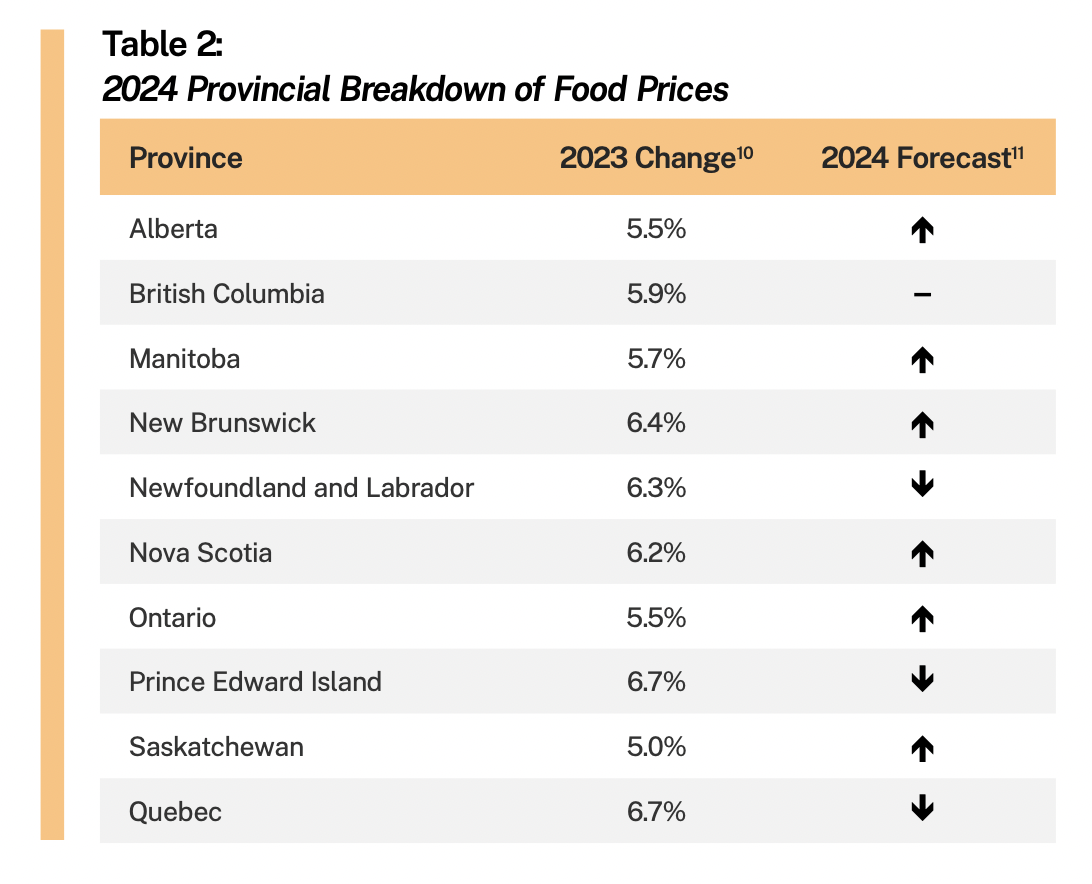it’s no secret that food affordability has plagued Canadians more and more over the years, and although it looks like the prices are set to rise in 2024, the increases will be lower than in previous years.
According to Canada’s Food Price Report 2024, shoppers in Canada may get some relief from “sticker shock” with overall food prices set to go up by 2.5% to 4.5%.
This is the 14th edition of Canada’s Food Price Report, an annual collaboration between research partners Dalhousie University, the University of Guelph, the University of Saskatchewan, and the University of British Columbia
The report states that the average Canadian family of four, which they classify as a man (aged 31-50), a woman (aged 31- 50), a boy (aged 14-18), and a girl (aged 9-13), can expect to spend about $16,297.20 on food for the year.
This is an increase of around $701.79 with the highest jump in prices from 5% to 7% when it comes to bakery items, meat, and vegetables.
Recent Posts
These are the Canada benefit payment dates for 2024
Love their scented candles? Bath and Body Works will soon have haircare in Canada

“The estimated increase of 2.5-4.5% for 2024 provides customers with much needed relief from the higher increases observed in previous years,” says Stuart Smyth, Chair, Agri-Food Innovation and Sustainability Enhancement at the University of Saskatchewan.
“They should expect to see a degree of stability return to food prices. I am optimistic that the phrase ‘sticker-shock’ will become less commonly used throughout grocery stores in 2024.”
While the report outlines that all provinces may experience price increases of up to 4.5% in the coming year, data remains scarce for Northern Canada, particularly for the Northwest Territories, Nunavut, and Yukon, but that these areas will most likely face higher food prices compared than the rest of the country. Here’s the breakdown of food prices for each province:

According to Statistics Canada, Canadian consumers are spending less money on food, but that it’s due to the ongoing issues surrounding stricter household budgets as people deal with higher costs of living, higher interest rates and an increase of debt.
Increases can be attributed to a number of factors including climate change, which the report states has effects on harvests, such as wildfires and flooding occurring throughout the country. Increased input costs for products, global events, and rising production costs have also contributed to price increases.
So get your grocery list ready and good luck!

